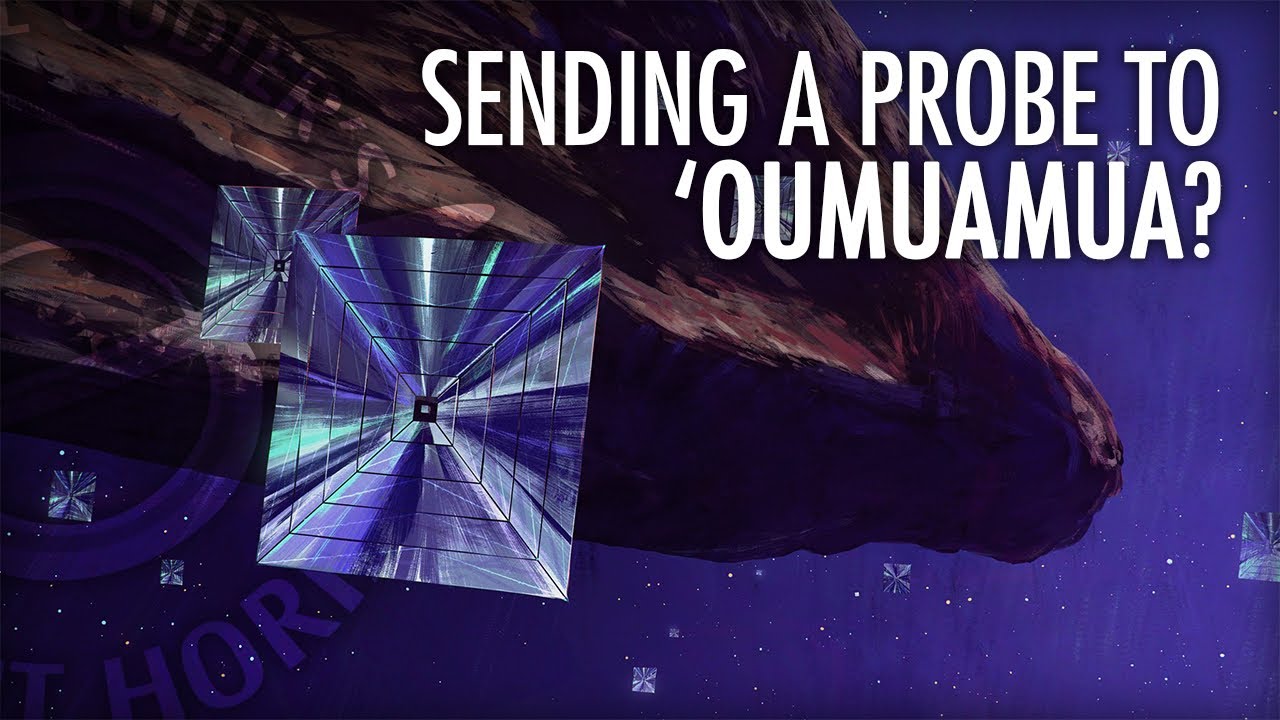Ever since the discovery in 2017 of interstellar object ‘Oumuamua (1I/2017 U1), various schemes for studying it or other such objects at close range with space probes have been explored. The quick reaction time and high velocity required even to fly by such an object, not to speak of rendezvousing with it for extended investigation, make mission design with available and affordable propulsion technology extremely challenging. One suggestion is to use the Sun’s gravity well for an assist with the Oberth effect, but this requires a heavy and potentially unreliable shield to protect the probe against the Sun’s heat at close range.
Project Lyra has investigated “A Mission to 1I/'Oumuamua without Solar Oberth Manoeuvre”, which would use multiple inner solar system gravity assists with a final kick from Jupiter to accelerate the probe toward the target. With a launch in 2028 on a heavy launch vehicle such as Falcon Heavy or SLS, the probe would arrive at ‘Oumuamua 26 years later for a fast fly-by at around 18 km/sec.
Not discussed in either the paper or the interview is the navigation problem, which appears to me to be insuperable. ‘Oumuamua was observed only over a period of 80 days, during which time it was seen to experience a non-gravitational acceleration on its outbound trajectory. By mid-December 2017, it was too faint to be observed by even the largest Earth-based telescopes. With such a small arc of trajectory having been observed, not to mention the acceleration, whose cause and expected magnitude over time are not known, there are large uncertainties in its current position and future trajectory. A probe launched toward our best guess at its position at arrival time will receive its last substantial course correction at Jupiter (or earlier, near the Sun, for the Solar Oberth meneuver), and not have the delta-v for substantial subsequent corrections. Since a lightweight probe will only be able to carry optical sensors with very modest aperture, and illumination of the target object by the Sun is falling as the inverse square of its distance from the Sun, which is increasing around 6 astronomical units per year, even if the probe is lucky enough to pass close enough to the target to see it, it will then be far too late to make a course correction in order to perform a fly-by close enough to provide useful data. It is far more likely the probe will never pass close enough to even see the target, and instead pass at a great distance in the night.
The only hope of better understanding objects of this kind is to hope they are sufficiently common upcoming sky surveys will eventually discover one still inbound to perihelion, situated so a probe can intercept it in the inner solar system, and that we’ve prepared a suitable probe and launcher ready to go when that happens.
